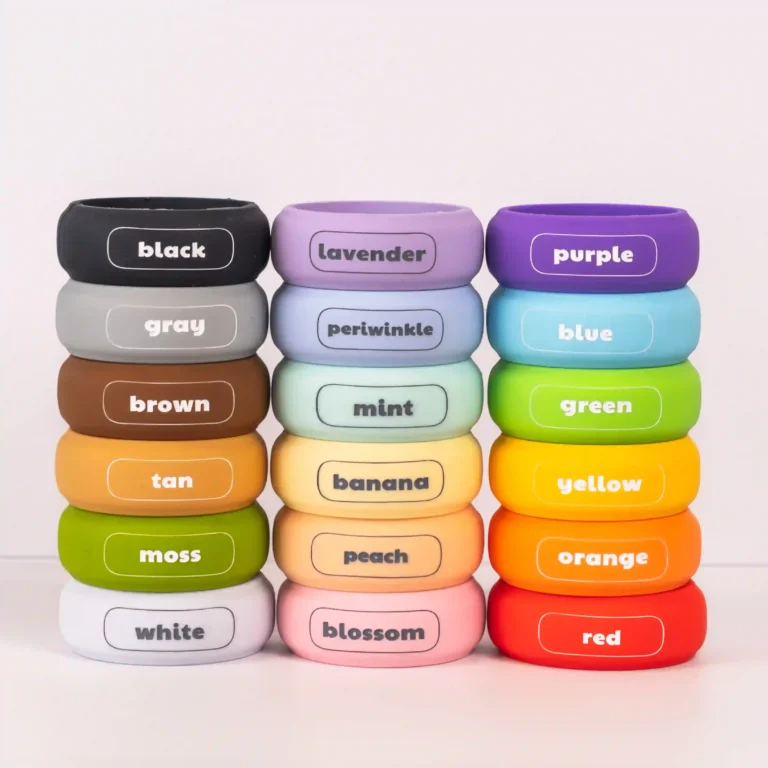Turning innovative ideas into successful products requires a well-structured approach to development. Research indicates that 95% of new products fail due to poor planning and misalignment; therefore, having a clear product development timeline is crucial. This guide outlines the six critical stages of the product development process, offering valuable insights to help you navigate challenges and enhance your chances of success.
Whether you’re an entrepreneur or part of a product team, mastering these stages will empower you to streamline your efforts and deliver products that truly meet market needs. Let’s explore how Gembah’s structured methodology can elevate your product development strategy.
TL;DR
Great products don’t just happen. They’re built through disciplined planning and execution. This guide breaks down the six critical stages of a product development timeline, from ideation to launch, helping you avoid wasted spend, prevent delays, and bring better products to market faster. Gembah’s process gives founders and teams the structure they need to succeed where most fail.
Key Points
- Why It Matters: 95% of new products fail, mostly due to poor planning, weak market fit, and misaligned timelines.
- Structured Timelines = Higher Success: Top innovators see 76% product success rates by following disciplined development processes.
- The Six Stages:
- Ideation — Find real market needs worth solving.
- Research & Planning — Validate demand, assess feasibility, and build clear specs.
- Design & Prototyping — Visualize, iterate, and pressure-test the solution.
- Testing & Validation — Uncover bugs and usability flaws before launch.
- Production & Prep — Align manufacturing, messaging, and support.
- Launch & Post-Launch — Go live, measure results, and refine fast.
- Gembah’s Edge: End-to-end product development support, from market research through manufacturing, built on structured timelines that accelerate results.

Why Do You Need a Structured Product Development Timeline?
The statistics paint a stark picture of why structured timelines matter. While the average success rate for new product development is only 51%, companies that implement structured approaches see dramatically better results. Innovation leaders achieve a 76% success rate compared to their less organized counterparts.
The consequences of poor planning are severe. Research shows that 95% of new products fail to meet expectations, often due to fundamental issues that structured timelines help prevent. Among startups specifically, 34% fail primarily due to a lack of product-market fit, highlighting the critical need for thorough market research and validation built into the development process.
Competitive Pressure and Speed-to-Market
Today’s business environment intensifies the need for structured approaches. 65% of companies report developing products faster to stay ahead of competitors, while 82% of product developers are constantly seeking ways to accelerate their development process. This pressure makes structured timelines even more valuable, as they help teams move quickly without sacrificing quality or missing critical steps.
Resource Management and Risk Mitigation
Structured timelines prevent scope creep by keeping everyone aligned on key deliverables and deadlines. When priorities shift or new features seem appealing, having a clear roadmap helps teams evaluate changes against their original goals and resource constraints. This becomes crucial when considering that about 27% of small businesses report startup costs between $50,000 and $175,000, while another 27% require between $250,000 and $500,000 to bring their product to market.
The coordination benefits extend beyond internal teams. Structured timelines enable better coordination across teams and suppliers, ensuring everyone understands their roles, deadlines, and dependencies. This reduces misunderstandings and delays, enabling the early identification of potential issues and allowing for quick pivots before problems escalate.

Key Stages of Product Development
Every successful product development timeline follows a disciplined structure that transforms raw ideas into market-ready products. Whether you’re building a consumer product, medical device, or hardware innovation, these six stages form the backbone of an effective go-to-market strategy.
Stage 1: Ideation and Conceptualization
The first step is clarity—what problem are you solving, and for whom?
- Conduct market segmentation and develop detailed customer personas to identify unmet needs.
- Use qualitative and quantitative data (e.g. interviews, surveys, usage patterns) to validate real pain points.
- Research existing solutions to uncover gaps or inefficiencies you can exploit.
- Host ideation sessions with cross-functional teams to generate innovative concepts.
- Run initial feasibility checks (IP research, early demand testing) to eliminate dead-end ideas early.
At Gembah, we support this phase with detailed market research services to help you identify true product opportunities based on real demand—not guesswork.
Stage 2: Research and Planning
This stage transforms promising concepts into executable plans.
- Conduct competitive analysis to refine your positioning and identify whitespace.
- Evaluate feasibility across technical, financial, and regulatory dimensions.
- Define product requirements, including key features, performance benchmarks, materials, and design constraints.
- Establish clear success metrics and business goals, such as cost of goods sold (COGS), customer lifetime value (CLV), and time-to-market (TTM).
- Build internal alignment across teams before investing in design or manufacturing.
Our team at Gembah helps clients translate insights into action with product strategy and planning services, ensuring the right foundation is in place before moving to design.
Stage 3: Design and Prototyping
Now your concept becomes real. Visual, functional, testable.
- Develop early sketches, CAD models, and wireframes to shape the user experience and physical form.
- Collaborate closely with engineers, industrial designers, and sourcing experts to ensure manufacturability.
- Build multiple prototype versions—from low-fidelity to fully functional units—for iterative testing.
- Use usability testing, ergonomic reviews, and stakeholder feedback to guide refinements.
- Consider Design for Manufacturing (DFM) principles early to avoid costly changes later.
Gembah’s industrial design and rapid prototyping services streamline this phase, helping you iterate quickly with feedback from real users and engineers.
Stage 4: Testing and Validation
This is your checkpoint. You’re validating both the product and the market fit.
- Launch controlled pilots or beta programs to simulate real-world usage and gather insights.
- Conduct functional testing, environmental stress testing, regulatory pre-checks, and field testing as appropriate.
- Gather structured feedback using surveys, interviews, and in-product analytics to spot weaknesses or friction points.
- Use this feedback to refine the product, prioritize changes, or, if necessary, pivot.
At this stage, Gembah can assist with pre-launch validation and product testing, ensuring the product meets technical, user, and market expectations before full-scale investment.
Stage 5: Production and Launch Preparation
Now it’s time to scale. This is where good ideas die without the right execution.
- Finalize production-ready files, packaging specifications, and supplier agreements.
- Choose vetted manufacturers with proven track records in your product category.
- Lock in logistics planning, order volume forecasting, and warehousing strategies.
- Develop go-to-market plans, including marketing campaigns, sales enablement, and customer onboarding flows.
- Train internal teams (sales, support, logistics) so your organization is fully aligned.
Gembah’s manufacturing sourcing network connects you to over 2,000 pre-vetted factories worldwide, with direct access to production management, quality control, and international logistics.
Stage 6: Launch and Post-Launch Evaluation
You’re live, but the real work is just beginning.
- Execute a coordinated launch across sales, marketing, and support teams.
- Monitor critical KPIs from day one: unit sales, return rates, user reviews, supply chain delays, etc.
- Collect feedback through direct outreach, in-app analytics, or customer support tickets.
- Schedule post-mortem reviews and backlog grooming sessions to prioritize fixes and plan the next iteration.
- Begin work on V2 or line extensions based on market response and sales data.
Gembah remains a long-term partner even after launch, supporting ongoing product improvement, reorders, and scaling with supply chain strategy consulting.

Learn:
How to Manufacture a Product and Sell It
5 Easy to Follow Steps for First Time Creators.
Final Thoughts
Bringing a product to market is never simple, but it doesn’t have to be chaotic. A structured product development timeline gives you the clarity, coordination, and control needed to reduce risk and accelerate success. By following the six key stages outlined here, from ideation to post-launch, you can avoid costly delays, improve team alignment, and deliver a market-ready product with confidence.
But execution is everything.
That’s why leading brands and entrepreneurs partner with Gembah. Our end-to-end product development platform combines expert guidance, vetted manufacturers, and real-world execution support to help you go from concept to shelf—smarter and faster. Whether you’re developing your first product or scaling your next, partner with Gembah to build it right from day one.



